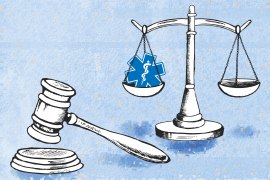Recently Released PLoS Article Looks at Myths Surrounding HIV/AIDS Epidemic in Asia
"Five Myths About the HIV Epidemic in Asia," PLoS Medicine: Peter Godwin, senior adviser at the National Centre for HIV/AIDS, Dermatology and STDs in Phnom Penh, Cambodia, and colleagues in the article discuss five "commonly held" myths regarding HIV/AIDS in Asian countries. According to researchers, the myths -- which could "seriously jeopardize" the fight against HIV/AIDS in the region -- are that Asia's HIV/AIDS epidemic will have a "development[al] impact" similar to that in sub-Saharan Africa; that the "Three Ones" strategy -- one national coordination authority, one strategic plan, and one monitoring and evaluation system -- is an "essential framework" for expanding the response to HIV/AIDS in Asia; that nongovernmental organizations have been more effective than governments in fighting the HIV/AIDS epidemic; that the Global Fund To Fight AIDS, Tuberculosis and Malaria makes "large amounts of funding easily available" without an "agenda"; and that an "expanded multisectoral response" -- in addition to the public health sector -- is vital to curbing the epidemic in Asia. The researchers write that all Asian countries must strengthen existing national and provincial organizations to develop a response to HIV/AIDS and that the "biggest challenge" is a lack of institutional capacity to deliver effective HIV prevention education and medical services at the community level. To address this challenge, countries must have "good evidence of each country's specific epidemiological needs; proven and working mechanisms for developing programs and channeling funds; and frankness, openness, and clarity of purpose and process," the researchers conclude (Godwin et al., PLoS Medicine, 10/3).
This is part of the Morning Briefing, a summary of health policy coverage from major news organizations. Sign up for an email subscription.





